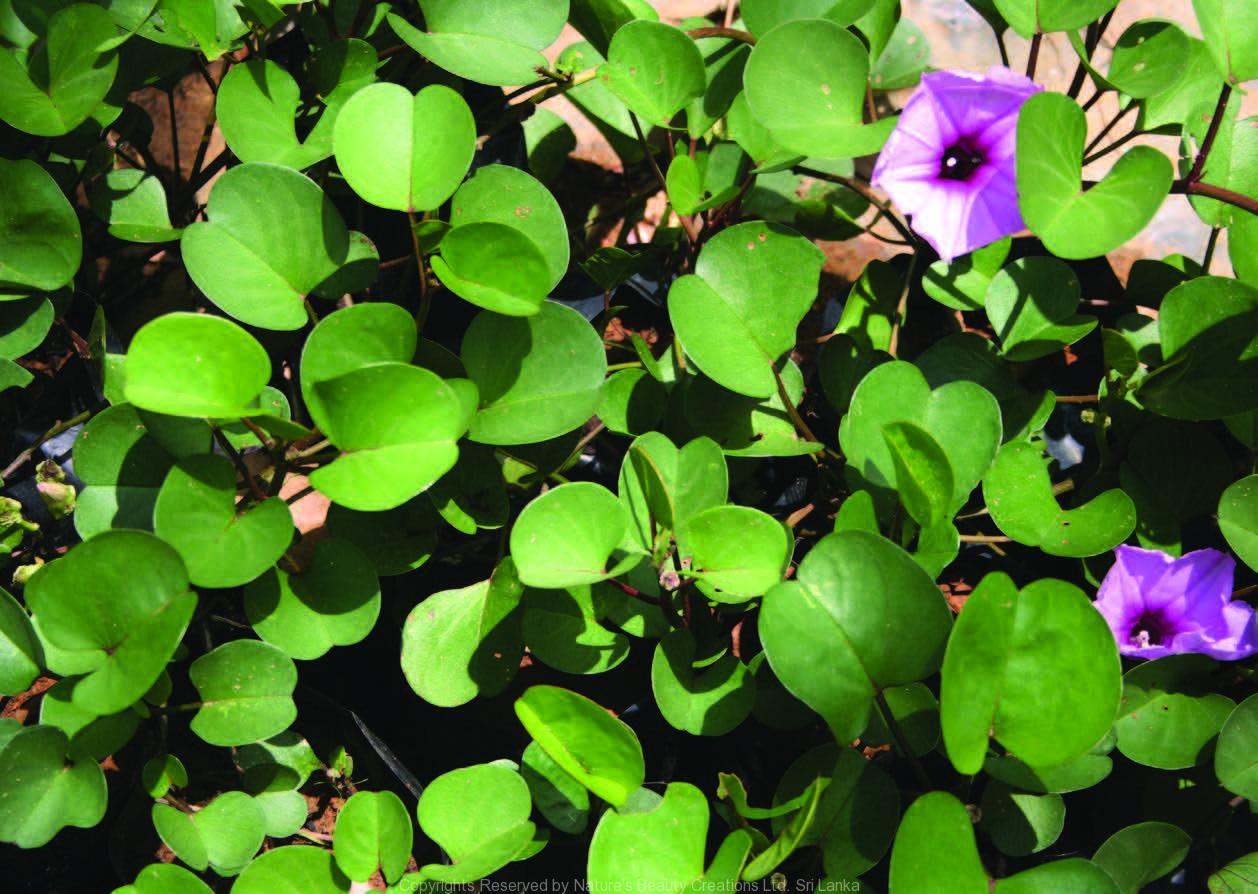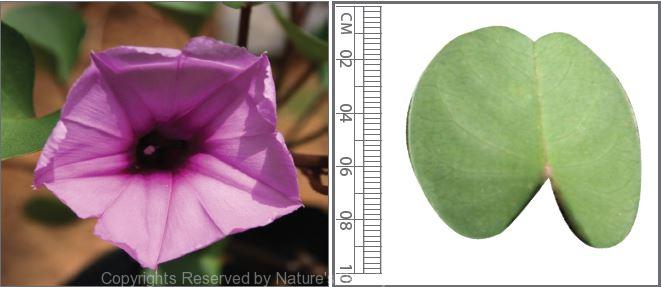

Traditional Knowledge
Useful plant parts :
Leaf
Uses in traditional medicine :
- Pounded leaves fried in ghee are applied for eye injuries
Scientific Research
Chemical constituents:
Cyanidin derivatives: triacylated and tetraglucosylated anthocyanins from flowers
Bioactivity :
Water extract of aerial parts: anti-inflammatory, antioxidative, analgaesic; methanol extract of plant: hepatoprotective, acetylcholinesterase inhibitory activity
Clinical:
Note :
Leaves are toxic to herbivorous animals
References : Farida, T. et al., (2012), Pharmacological evaluation of Ipomoea asarifolia (Desr.) against carbon tetrachloride-induced hepatotoxicity in rats, J Ethnopharmacol, 142(3), 642-6. Feitosa, C. M. et al., (2011), Acetylcholinesterase inhibition by some promising Brazilian medicinal plants, Brazilian Journal of Biology, 71(3). Lawal, U. et al., (2010), Anti-inflammatory and analgesic activity of water extract from Ipomoea asarifolia Desr (Convolvulaceae), African Journal of Biotechnology, 9(51), 8877-8880. Medeiros, R. M. et al., (2003), Tremorgenic syndrome in goats caused by Ipomoea asarifolia in Northeastern Brazil, Toxicon, 41(7), 933-5. OjoAtawodi, S. E. and Onaolapo, G. S., (2010), Comparative in vitro antioxidant potential of different parts of Ipomoea asarifolia, Roemer & Schultes, Guiera senegalensis, J. F. Gmel and Anisopus mannii N. E. Brown, Brazilian Journal of Biology, 46(2). Pale, E. et al., (2003), Two triacylated and tetraglucosylated anthocya- nins from Ipomoea asarifolia flowers, Phytochemistry, 64(8), 1395- 1399.
Copyrights Reserved By
Natures Beauty Creations



